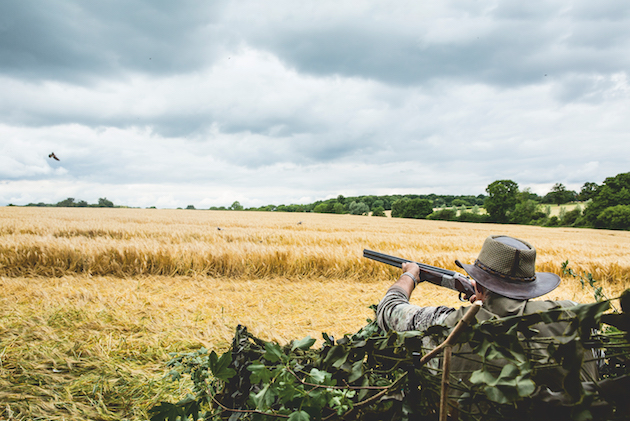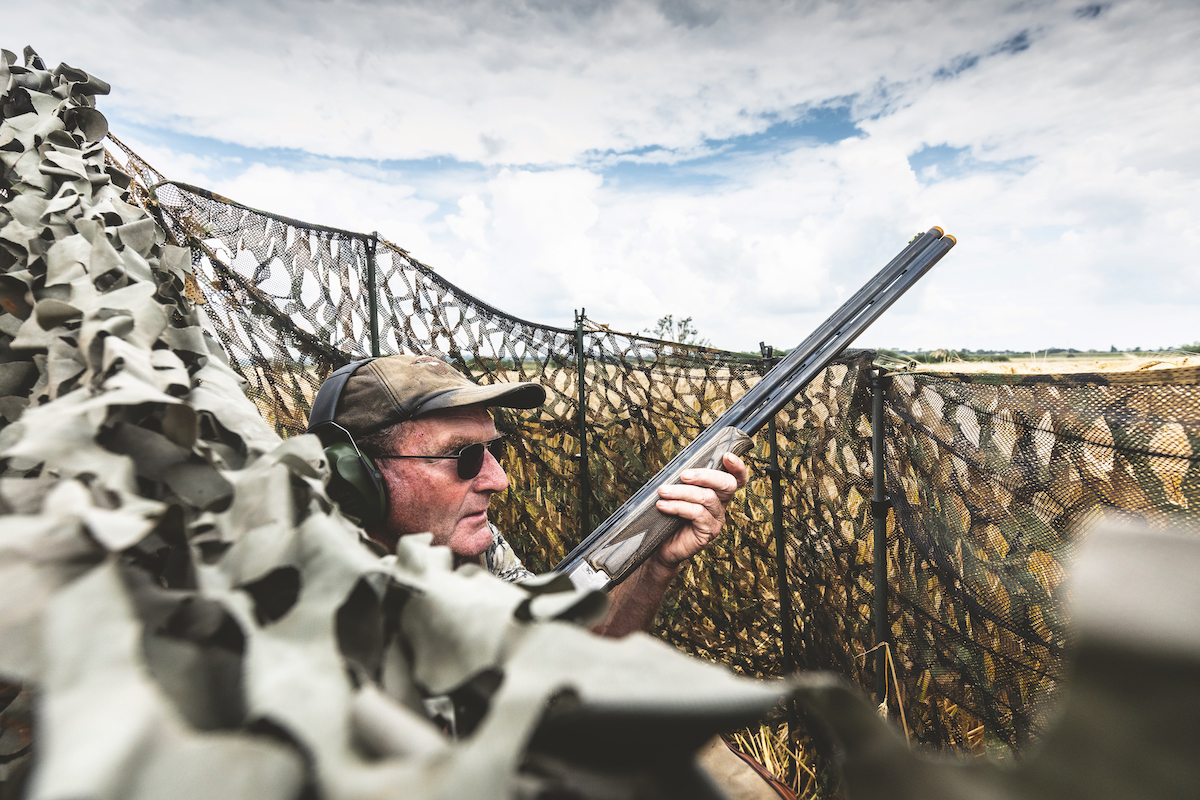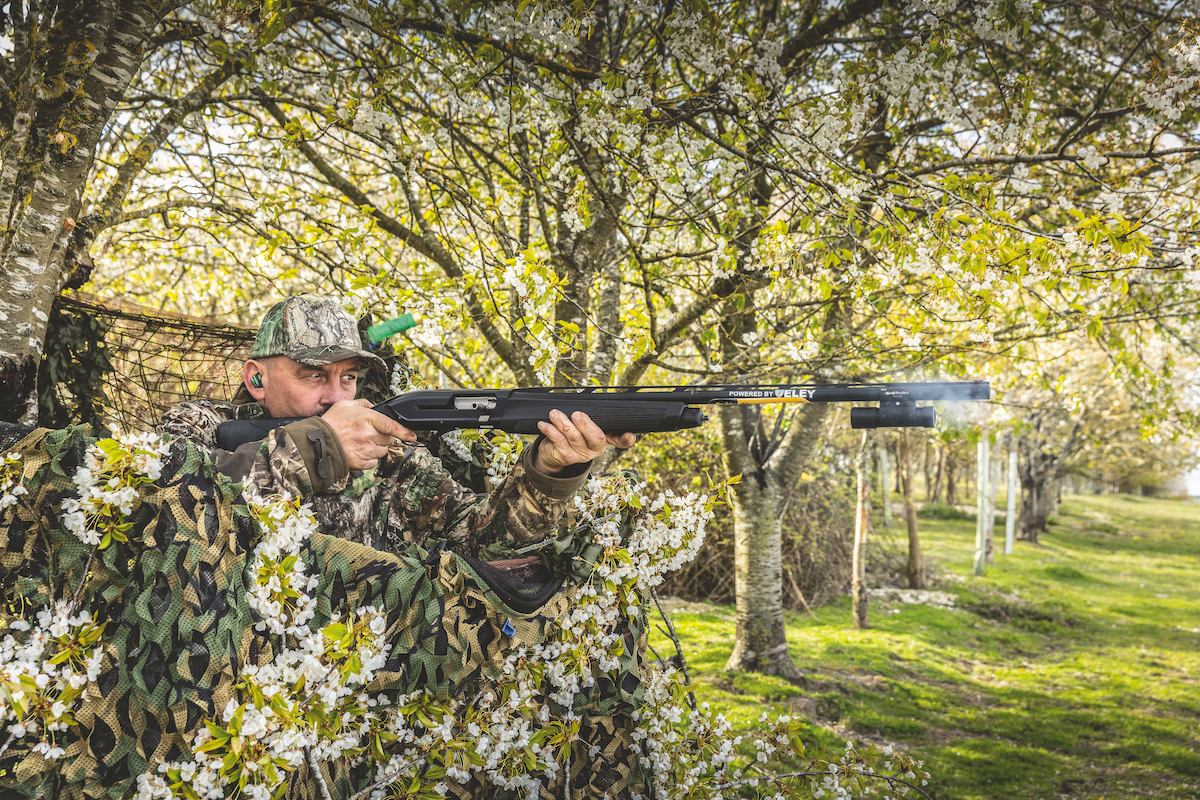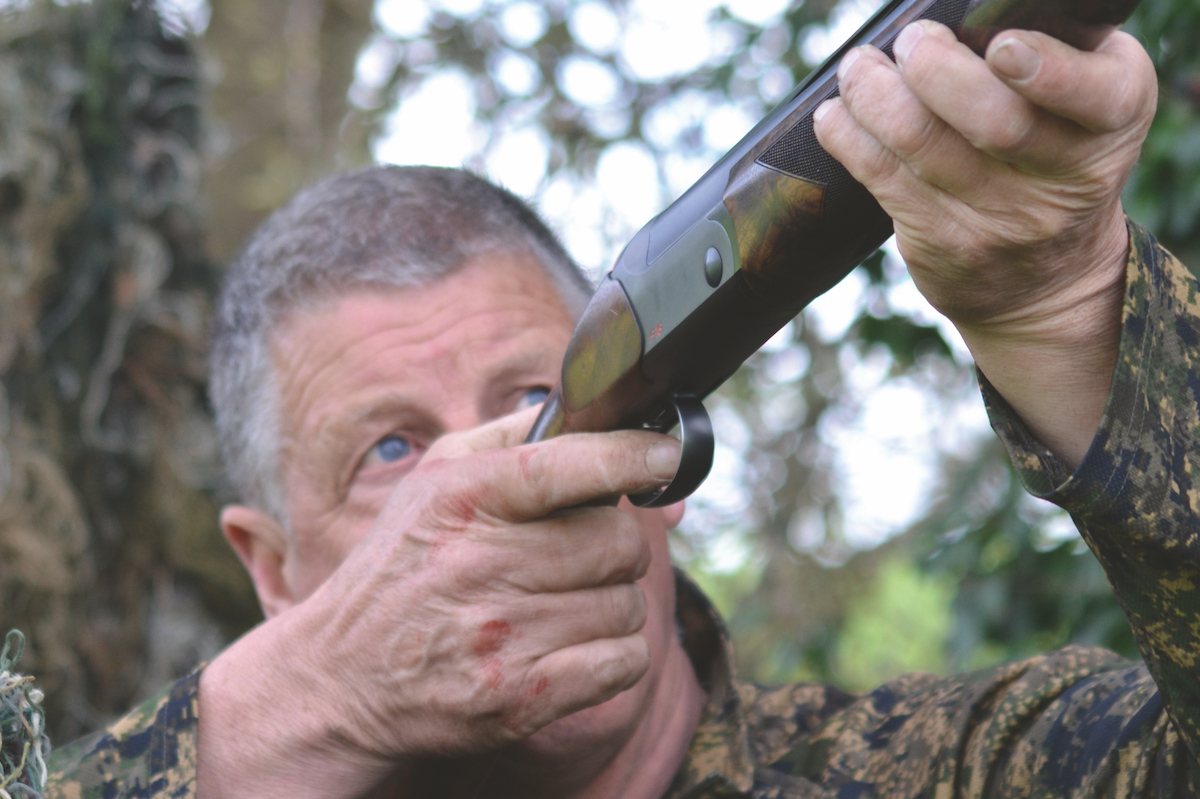Pigeon shooting accessories – Geoff Garrod on what you really need
Geoff Garrod on what he uses and why

Barley provides pigeons with a hearty summer feast
Having a lot of pigeon shooting accessories isn’t for me. It might be what some pigeon shooters want but I’d rather depend on the 40 years of fieldcraft and knowledge that I’ve built up. And if I do have kit, I prefer the simple.
Essential pigeon shooting accessories
First off, I have to have my dogs around. They’re superb at finding shot birds.

Geoff Garrod with his dogs
Ear protection
In my view this is essential as I know to my cost. Forty years ago nobody wore hearing protection and I only started 10 years ago, which was too late. I struggle to hear well in a crowed as a result. You can choose from ear plugs or ear defenders, whatever you find most comfortable. Just make sure you have these essential pigeon shooting accessories – they’re obligatory in my opinion.
I couldn’t get on with the over-ear ones because they banged on my gun stock when I quickly mounted the gun, and then they’d be pushed off my head or go wonky along with my hat. Some people don’t find this a problem and swear by them, it just depends on your body shape and stock dimensions. Nowadays I use Cens Puretone earplugs. These are moulded to the shape of your ear and have minute electronic devices in them that do the noise cancelling. I love them.
Eye protection
Another non-negotiable in my view are safety glasses. I use ones from Oakley, but there are many other good makes on the market. I use them for both clays and pigeon shooting and I have a few sets of lenses for them to suit all occasions. Yellow for low light, clear purely for eye protection, dark grey for bright days and orange for overcast days.

It’s useful to have a variety of lens colours handy for different conditions
Why do you need eye protection? Spent cartridges from a semi-auto can be ejected close to the face and debris sometimes blown back into your eyes. Of courses glasses will also help you to see the target better and if it’s a bright day your eyes will be more comfortable in strong light.

A pair of binoculars for observation work will come in useful
Hats for shooting
I also always wear a hat for pigeon shooting. Pick one with a peak or wide bring – it will keep the sun out of your eyes AND keep your face in shadow. That’s key when you’re after pigeons. They are keen-eyed birds who are good at spotting movement. They’ll see a bright face moving against a dark hedgerow and be off.
Guns for pigeon shooting
My gun of choice is a Browning Maxus, camo, with a composite stock and a 28in barrel. Before that I used to shoot a Beretta 303 four shot semi-auto that was on my firearms ticket for “destruction of ground game and vermin”. Pigeons come under vermin.
The Browning is a comfortable gun to use, very reliable and I wouldn’t dare think how many shells have gone through it. I use a quarter choke, because I like to get the birds in as close as I can when decoying to make sure of a clean kill, and quarter choke gives a great pattern at ranges between 10 to 30 yards.
My preference is to use a semi-auto while in a hide. My reasons are; ease of loading – that third cartridge can be very useful on a busy day when the birds are decoying well – lower recoil on big days and no tangles in the camo netting when closing the gun. It can be a bit of a faff making space in the hide to allow for opening and closing a double-barrelled gun, where as with a semi-auto you can simply keep the barrel pointing straight up in the air and feed the cartridges into the breech. That isn’t to say you can’t use your over-and-under or side-by-side, this is just my preference.

Geoff uses a quarter choke for its pattern ranges up to 30 yards and Eley cartridges
Cartridges
My pigeon shooting cartridges of choice are Eley Pigeon Select 30g No 6 shot, or Eley Pigeon HV 32g No 6 shot. I only use fibre wads and use the 32g load when roost shooting, or if the birds are being a bit ‘spooky’ and won’t commit to the pattern and I end up shooting at longer ranges. For most days out, the 30g load will easily do the job, especially if you “kill the head, as the back end will die with it”!

Plastic decoys help as do real birds, if you have the freezer space
Decoys
You’ll need a set of decoys and I’ve been using the full-bodied variety made by Enforcer for the last year. There are many decoys on the market and most are good. If you have them available, and a leaning towards the traditional, dead birds are a great way to start, but that does mean keeping half a dozen or so in the freezer, which isn’t always popular with the family. The plastic variety do the job.
You don’t need many pigeon decoys. I have 10 in my kit, but on occasion I’ve had a good day starting off with only one dead bird – or even none! You’ll need to be right on the flight line if you’re doing that, and you’ll have to have done your reconnaissance well.
Some people will buy a rotary, a battery-powered device that rotates with two dead pigeons on long arms. Many of those users swear by them, and while I don’t deny that they can often help, I don’t use them as I like to keep things simple.

Hide camo netting should blend with your environment
Pigeon hides
Try to match the background where you are shooting.
To build a pigeon hide, you will need plenty of camo netting. I’ve always found or bought ex-army netting and I have a selection of colours for different seasons. From light desert camo, for ripe wheat or barley fields, dark green for matching summer hedgerows and brownish netting for the winter months.
I take at least six hide poles with me, and I like the ones with a sturdy footrest to help push them into hard ground. Make sure they extend high enough for you to be able to shoot from a standing position, which is what I’d recommend to start with, especially if you aren’t used to shooting from a seat. The netting will need to be just below your armpit level.

Be sure to load enough water for your canine workers
Other useful pigeon shooting equipment
- A pair of loppers for removing any branches that are in your way (try to remove as little as possible to keep the landowner happy)
- A spade to level out the ground in the hide where you stand, and a pair of binoculars for observation work.
- Two foot-long garden canes are great for propping up shot birds to add life to the pattern and very inexpensive. I take a bundle with me; you push the stick up the dead birds rear end up to the head, then push the stick into the ground. The dead bird will wobble in the wind and help to make it look as if the birds are moving around a little.
- Sun screen if it’s a hot day
- A bottle of water








